Web Design Costs, Website Design Budget, Professional Web Design Prices
Table of Contents
Introduction to Web Design
Website design is a core component of developing an online brand. Graphic design is paired with web development to ensure that a site is usefully functional and visually appealing, conveying a brand’s image to the viewer. In the modern world full of rivalry among internet companies one must know what web design includes and how much money must be spent on it to succeed.
Definition of Web Design
Web design is the process of designing the visual content when developing websites, as well as their organization. It touches on the general design aspects such as the composition, color, typefaces, and images, and; the semantics and aesthetics of UX and UI design. Web design helps guarantee that the user interface conforms to the intended objective and goals of the site and thus facilitates the offering of enhanced interactivity and conversion.
Importance of Web Design
To cut the story short, the role of web designing cannot be overemphasized. Adding to that, a website is believed to be the first touch point of a business with the customer. The appearance of any website also matters tremendously in building much-needed credibility, strengthening any company’s body image and most definitely affecting the sale of its stock. On the other hand, a poorly designed and developed website leads to visitors turning away, and consequently, the brand is damaged.
The areas of focus that define the concept of web design are:
Several core elements contribute to effective web design: Several core elements contribute to effective web design:
Layout: How objects are positioned on a page.
- Color Scheme: The choice of colors that have been used on the website.
- Typography: The manner of writing: format and aesthetic presentation.
- Imagery: Pictures, designs, and logos are incorporated to make items look more attractive.
- Navigation: Activities that are performed by the users of the site.
- Content: The website encompasses all the textual, graphical, and motion picture-based information as textual information here refers to all the textual information on the site.
History of Web Design
The technique of web design has been enhanced since the beginning of the World Wide Web. It should also be noted that in the 1990s, the websites themselves were not as complex as they are now since, for the most part, they only contained text-based pages. It may be seen that, mostly due to the appearance of HTML, CSS, and JavaScript, the ideas have become more diverse and the designs more elaborate and effectuated. Currently, web design is a multi-realization sphere, the key branches of which are graphic design, UX/UI design, and responsive design.
Types of Web Design

Web design can be categorized into several types based on functionality and aesthetics: Web design can be categorized into several types based on functionality and aesthetics:
- Static Web Design: Most suited to a small website and is the type of content where the products and services being showcased remain undisturbed and remain the same over long periods.
- Dynamic Web Design: The content varies depending on the actions of the users or use patterns.
- Responsive Web Design: Responsive to the screen size and devices.
- E-commerce Web Design: Invoking concepts that are related to internet selling and other forms of transactions.
- Corporate Web Design: Business appeal for organizations.
You will come across many times two closely related terms:
Web design and Web development.
Although web design mainly concerns the aesthetic or GPS experience of a website web development is more technical in its execution. Some are responsible for the aesthetic and mood of the site, others are responsible for the work and the knowledge of code languages HTML, CSS, JavaScript, and back-end technologies.
Web Design Trends

The rapidly dynamic world of web design requires internet marketing to incorporate new trends and be contemporary. Current trends include:
- Minimalism: Simplicity and less text with vast areas of the white background.
- Dark Mode: Themes that are dimmed or with darker colors to help in the low light readability.
- Micro-interactions: Tiny graphics that increase the usability of a site.
- 3D Elements: Proving to be very useful in developing the design to greater depth and realism.
- Voice User Interface (VUI): Voice command capabilities of the system and their integration to issuing directions.
If a chain is as strong as its weakest link, then the power behind an online business lies in the marketer/web featured below:
A web designer is a professional who takes care of that side of the website that one can perceive with their eyes and touch with their fingers. Their duties include:
- Conceptualizing Designs: Designing of mock-ups and wire-frames.
- Choosing Color Schemes and Fonts: Most of them bore the characteristics of consistency and readability as their primary guarantee.
- Creating Graphics: Symbol creation, for logos, icons, etc.
- Improving User Experience: Ensuring the website is easy to navigate by the end users.
- Collaborating with Developers: To make sure it fits the client and is implementable in real life.
The skills that every web designer needs.
Web designers need a blend of creative and technical skills, including:
- Graphic Design: Familiarity with computer applications such as Adobe Photoshop and Adobe Illustrator.
- HTML/CSS: HTML, CSS, and, JavaScript skills to develop and design web pages.
- UX/UI Design: Overview of User Attributes Targeted and Navigation Usability.
- Responsive Design: Ensuring that the website is compatible with different gadgets.
- Problem-Solving: Breaking down design issues and identifying their resolutions. Improving upon ideas and making adjustments.
However, the AH Moves slightly to the right to select the ‘Web
Design Style’, as shown by the double arrows in FIG. 2 below:
Web design style choice is determined by the brand style and clients it caters to mostly distinguishing between minimalism and maximalism. Popular styles include:
- Modern: Feminine and business-like with a distinct emphasis placed on the manufacturer’s lines.
- Vintage: Semi-antique proposed designs with features of postmodernism.
- Corporate: Slick and corporate, best suitable for enterprises.
- Creative: Singular and creative aesthetics that are different.
- Minimalist: Uncomplicated and ‘bare’, making a point to not have any distracting additions that may detract from the text and its accessibility.
Parameters Affecting Web Design Expenses
Several factors determine the cost of web design:
- Complexity: Higher-end and intricate style designs are going to be costly.
- Customization: Customization costs more than setting up a design that is already on the market.
- Experience: There is a certain level of expectation placed on the ability of a designer depending on their years of experience and this means that the more years a designer has under his belt the higher the charges that he is likely to make.
- Functionality: There are additional costs in things like e-commerce, databases as well as other functions.
- Maintenance: Updates and support are other aspects that influence price since products need constant updates.
DEALING WITH FREELANCE WEB DESIGNERS & DESIGN AGENCIES
When in the process of looking for the right web designer to hire you have the choice between hiring a freelance and hiring a design agency. Independent contractors are cheaper and clients have a chance to negotiate with them directly but they are not likely to have many assets. Similarly, agencies offer a more general scope of services and assistance with smaller charges than the costs attached to professional services.
In-House Design vs. Outsourcing
Employing in-house designers or outsourcing is relative to the business requirements and its capacity to invest. The internal staff is loyal and has a greater appreciation of your brand image, but outsourcing brings in fresh creative talent and good versatility.
Web design for any business requires serious consideration if one is to achieve the best design for the site and at the same time, minimize cost.
To budget for a website design, consider the following steps:
- Determine Your Needs: This is a result of knowing the features and functionality required.
- Set a Budget: Budget for the amount you are willing to spend for your website.
- Research Designers: In this case, find the differential between the rates and portfolios.
- Allocate Funds: Always make sure you have ample amounts for the first phase as well as subsequent phases if required.
The costs stated below are averages for the following types of websites:
Website design costs can vary widely based on the type of website:
- Personal Website: $132
- Small Business Website: $500
- E-commerce Website: $395-$920
- Corporate Website: $1,000-$3,000+
- Custom Website: $5,000+
Ways of Analyzing Web Design Costs
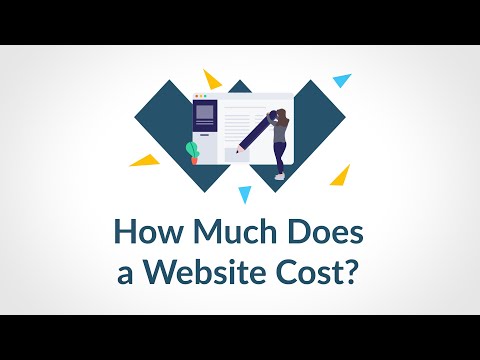
Understanding the breakdown of web design costs can help you budget effectively:
- Design and Layout: This Pet Scan test could cost anywhere between 30-50% of the total cost.
- Development: It is requested to be 20-40 percent of the total cost.
- Content Creation: that may be on average 10% to 20% of the total cost.
- SEO and Marketing: This is generally in a range of between 10 – 20 % of the total cost.
- Maintenance: usually it is in the range of 10-15% of the total construction cost.
Considering When Needing A Web Designer
When selecting a web designer, consider these factors:
- Portfolio: Always their previous work to determine how they will work regarding style and skill.
- Experience: To ensure that you get the best design for your business, make sure that the designer you hire has the proper experience in your line of business.
- Reviews: Approve testimonials and references that may have been used for advertising purposes.
- Communication: Make sure that they are communicative and friendly to deal with.
- Pricing: Hi, I am doing a comparison of quotes and want to know the value for money.
Understanding Web Design Contracts
A web design contract outlines the terms and conditions of the project, including:
- Scope of Work: Information on the development of the various services offered.
- Timeline: Deliverables and due dates of a project.
- Payment Terms: When envisioning the schedule and methods of payments, the following points can be made:
- Revisions: Raw and unstructured count of how many revisions were included in the final version of your submission.
- Ownership: Customer ownership of the last version of the design and its source files.
Specifically, I find how to save money on web design intrigues me if people are smart and know how to practically handle themselves online and in business why do they need help or input from other people when they are going to spend a lot of money?
To save money on web design, consider these tips:
- Use Templates: It is better to take ready-made designs rather than having new ones designed.
- Limit Features: One should aim for simplicity and relevancy of the features the product has to offer.
- Hire Freelancers: Freelancers can be hired for less big projects.
- DIY Options: Website builders such as Wix, Squarespace, and so on.
- Negotiate: Negotiate over payment terms or, because designers may charge more to work with them, discuss the possibility of obtaining a quantity discount.
The main significance of Quality Web Design
A high-quality web design investment pays itself off. A proper design is going to introduce more people to the site, make those people more satisfied, and make them into customers. It also benefits you in terms of branding and can place you in a better position relative to rivals.
Despite the short-term gains, it is worth looking at the long-term advantages of good web design which are as follows.
The long-term benefits of good web design include:
- Enhanced User Experience: Features like site map and search engine capability, better organization.
- Increased Engagement: Higher visitor retention and interaction imply that audiences spend a longer amount of time interacting with ads and content produced by the brand.
- Better SEO: Practical skills highlight that the site’s design can enhance the rating in search engines.
- Brand Credibility: Specialized design makes the outcome of the business more trustworthy in the eyes of its customers.
- Scalability: I always recommend having a well-designed site responsive to the development of the business.
Website Design Based on the Size of Business
Web design needs vary based on the size of the business:
- Small Businesses: State what the company does and lean on affordability and uncomplicated.
- Medium Businesses: Detail Sponsorship will allow you to balance the cost of the product with the added features it will have.
- Large Enterprises: Give importance to the customization of products and enhanced and strong features of them.
DIY Web Design Options
Those who do not have large amounts of money for professional services should turn to do-it-yourself web design solutions. Existing website builders such as WordPress, Wix, Squarespace, and many others come with graphic user interfaces and fairly easy-to-use templates that those who do not have a technological background can develop stunning websites.
More specifically, the utilities of Web design consist of the following set of tools:
Web designers use various tools and software to create websites, including:
- Adobe Photoshop: In graphic designing and photo touching up.
- Sketch: A design software to create vector graphics for use in creating interfaces of user experiences.
- Figma: An interface design tool that is coordinated to be built in cooperation with others.
- WordPress: One could state that it is remarkably very similar to CQ5 which is a content management system for building Websites.
- Bootstrap: The approach for designing for the internet.
Responsive design and why it is significant.
Responsive design makes sure that a website will act and appear properly whether is being operated from a PC, a tablet, or a mobile phone. It optimizes user experience by increasing ‘stickiness’ thus low bounce rates and boosts SEO, which is crucial in the first-world mobile environment.
SEO and Web Design
It is crucial when it comes to website designing as it is all about- Search Engine Optimization or SEO. Key SEO-friendly design practices include:
- Fast Loading Times: Reduced the sizes of images and codes to ensure the page loads faster.
- Mobile-Friendly Design: Make sure that has a good response.
- Clean Code: Semantically defined HTML and other styles of CSS for improved crawlability.
- User-Friendly URLs: It reminds me of ‘clean and simple URLs’.
- Keyword Integration: Correct keyword usage in the body of the content as well as in meta tags.
There are several common Web Design Mistakes you should Avoid
Avoid these common web design mistakes to ensure a successful website:
- Cluttered Layouts: Some of the mistakes that are observed in website design include the following: Providing too much information at once, on the same page.
- Poor Navigation: Deliberately leading the users in the wrong direction.
- Slow Load Times: Failure to properly work on images and code.
- Non-Responsive Design: Leaving aside the mobile and tablet users.
- Inconsistent Branding: Lack of proper coordination in brand images.
Future of Web Design
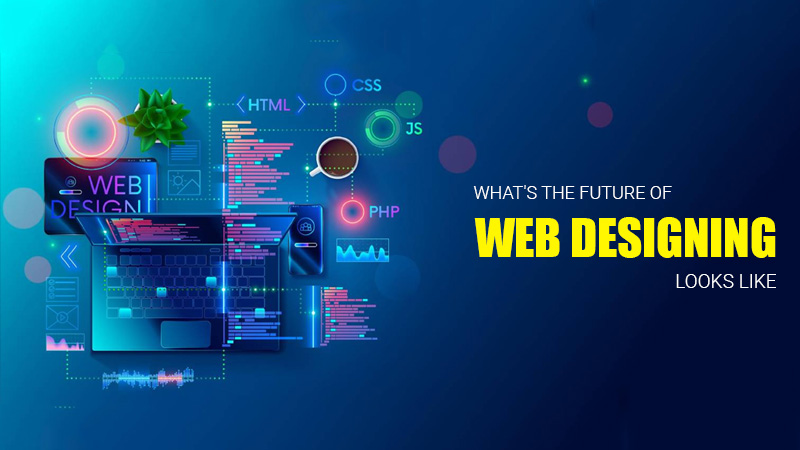
The future of web design is set to be dynamic and user-centric, with trends like:
- Artificial Intelligence: AI approach-based design software and conversational interfaces.
- Augmented Reality: The use of AR for combining both interactivity into a single application.
- Voice Search Optimization: Voice search queries for design.
- Motion UI: To illustrate this, animations as a method of encouraging user participation.
- Sustainability: Techniques to incorporate sustainable design principles for the reduction of energy use.
FAQs
What is web design?
Web design deals with the construction and organization of features to be placed on a website and its overall feel and usability.
Why Web design?
This makes consumers have a good perception about the site and this will in the long run increase its sales since they will be convinced of the site’s credibility.
What is a reasonable web design cost?
As mentioned above, the website designing price range is very broad and can start from $132 for a mere personal site and reach $100 000+ for a unique business-like site with additional features.
What determines the price of web designing?
These are the level of compliance with the design requirements, a degree of customization, a designer’s expertise, and such features as an online store or databases, respectively.
Which one should I choose for web design; a freelancer or an agency?
Individuals are usually cheaper and can focus on a given project, while agencies offer diverse services in terms of specialization.
Can I design my website on my own?
Yes, one can have websites from DIY solutions such as Wix, Squarespace as well as WordPress with no coding knowledge.
Conclusion
Defining what web design is and how much you should spend on it are important questions for anybody seeking to build a material web identity. Starting with the basic question of ‘what is web design and why is it crucial’ all the way to cost considerations and potential developments in the field of web design, this complete guide is designed to help you make the right choices regarding the design of your site. Marketing the services online can effectively be carried out through quality website design not only for convenience but also for credibility purposes that will lead to the achievement of business goals in the future.
#Web Design Costs, Website Design Budget, Professional Web Design Prices,#Web Design Costs, Website Design Budget, Professional Web Design Prices,#Web Design Costs, Website Design Budget, Professional Web Design Prices,#Web Design Costs, Website Design Budget, Professional Web Design Prices,
#Web Design Costs, Website Design Budget, Professional Web Design Prices,#Web Design Costs, Website Design Budget, Professional Web Design Prices,#Web Design Costs, Website Design Budget, Professional Web Design Prices,#Web Design Costs, Website Design Budget, Professional Web Design Prices,




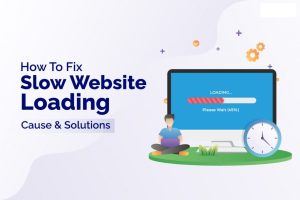

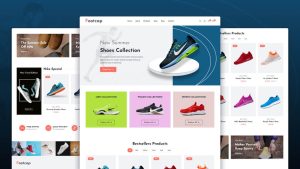
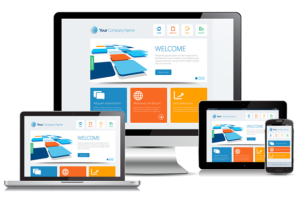


One Response
I simply could not depart your web site before suggesting that I really loved the usual information an individual
supply for your visitors? Is going tto be back ceaselessly to
inspect new posts https://Lvivforum.Pp.ua/